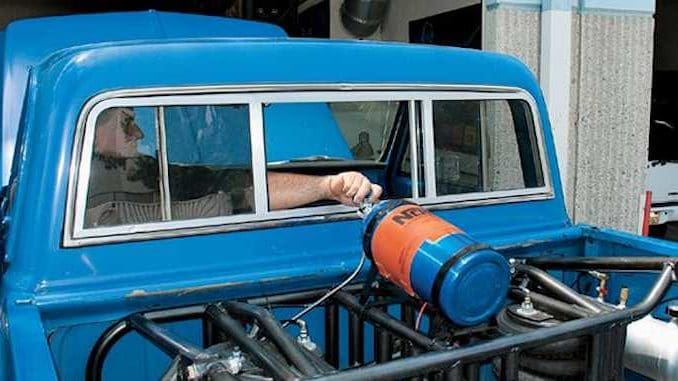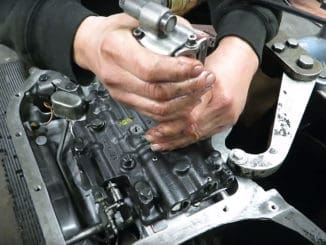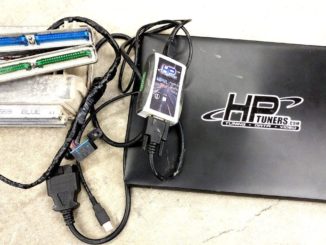
If you’re like us, you’ve probably watched every installment of the Fast and the Furious. Whatever your reasons, those movies immortalized nitrous oxide as the most popular means of boosting a car’s performance.
You wouldn’t think it, but we gear-heads have the German Second World War scientists to thank for our precious gas.
The story’s been told over and over, but for those of you who don’t know, nitrous oxide was used in military aircraft to compensate for loss of engine power the thinner air at high altitudes caused.
Years later in the 70’s, nitrous made a comeback on the racing circuit. These days, fitting a nitrous kit is definitely the way to go for an instant boost in power.
Usually stored in a gas bottle installed above the car’s center console or in the trunk, nitrous is injected into the intake where the heat breaks it down into nitrogen and oxygen molecules. This way, more oxygen mixes with more fuel, resulting in much stronger combustion and therefore a bigger burst of power.
If you’re keen to boost engine performance and you’re considering nitrous as the means to bigger power, your best bet would be a fogger system. Yes, it’s a little more expensive than the plate system, but it’s guaranteed to greatly increase overall power output.
Plate systems can easily be fitted between the carburetor and intake. A fogger system, however, converts the liquid nitrous into a sort of mist when it enters the intake. As explained earlier, the molecules break down into separate oxygen and nitrogen. The oxygen and the fuel combine for combustion while the nitrogen absorbs the heat.
Just like some of the guys from the movies though, misuse of nitrous oxide will severely damage your engine. The power generated by the meeting of the gas and the fuel can become uncontrollable and dangerous to you manifold — among other things.
Make 100% sure your engine bay and the inner works are properly reinforced before fitting a nitrous kit. Also, fit the relevant gauges to monitor your engine as you drive or race.
Any car enthusiast will tell you that a nitrous oxide kit is the top of their list of go-faster modifications. It’s a thrill to feel the effect of the increased power and speed. Just also be careful about how you use it.
How a Nitrous Oxide System Works
The most essential part of a nitrous oxide injection system is the supply cylinder containing pressurized liquid nitrous oxide. This cylinder is connected by means of a delivery hose to a normally closed electric solenoid valve.
The control solenoid valve (which is usually mounted in a cool area under the bonnet), is opened and closed by means of a sequence of two switches, one activated by the throttle and the other a manually activated arming switch.
A fuel solenoid (controlled by the same switches as the nitrous solenoid), takes a feed from a ‘T’ piece, which is tapped into the fuel delivery line. The nitrous oxide and fuel that is to be delivered to the engine is supplied via two delivery pipes, to one or more injectors mounted in the inlet manifold.




